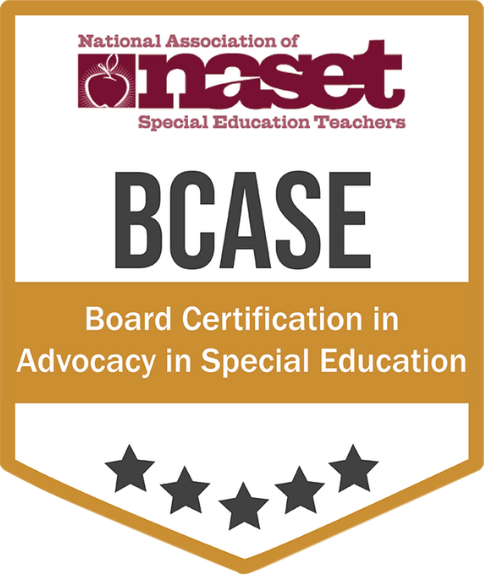What is Plagiarism?
“Plagiarism is the use of another’s work, images, ideas, or words without properly citing the original author or creator.”
The act of plagiarism is rooted in dishonesty, and nearly all student codes of conduct list it as a punishable act. Plagiarism is not simply borrowing or using someone else’s ideas, it is the act of presenting those ideas as one’s own and, in effect, stealing them.
Properly crediting sources is important skill students are supposed to learn during their high school and undergraduate years. Intellectual property and copyright principles protect the intellectual and imaginative work of authors. Plagiarism is the cardinal sin of academia. Authors, teachers, and administrators want to create an atmosphere of honest and credible intellectual debate inside and outside the classroom. Contact K Altman Law if you are facing accusations of plagiarism or academic dishonesty.
Plagiarism has become more complex as the internet and social media have made it easier for students to appropriate the ideas and expressions of others. Governments and regulatory agencies around the globe have implemented programs designed to protect intellectual property. The artists, musicians, and writers who produce intellectual property often need government protection to prevent their works from being used by others.
After the Second World War, agencies began advertising term paper assistance programs for undergraduate students. Student assistance programs became more prevalent after the World Wide Web became accessible to consumers across the United States. More companies are now offering students assistance with their research projects and academic essays. However, the internet also acts as a tool for professors who are attempting to discover which of their students commit plagiarism. Some students may copy
other essays verbatim and submit them as their own work.
College Students and Plagiarism
Different sources provide accounts of the rate of plagiarism among undergraduate students in the United States. No exact figures exist that reflect how many students have committed plagiarism in the United States. Some studies suggest that approximately 35% of undergraduate students in the country have plagiarized the work of others. Some studies also suggest that plagiarism is more common among high school students.
The Factors Causing Students to Plagiarize
- Students may have plagiarized from the time they were in middle school and high school. If students were never reprimanded for plagiarism before they may be more likely to continue the activity in the future.
- Peer pressure may also be another contributing factor that causes students to become comfortable with committing plagiarism. Over time, these students become comfortable with plagiarism and do not believe they are doing anything dishonest.
- Students who procrastinate may be more likely to plagiarize the work of others. If the student does not have sufficient time to research and draft an essay, they may panic and commit plagiarism.
- Students may also not understand the course material and use the work of others to obtain academic credit.
The Categories of Plagiarism
The following are some of the most common types of plagiarism:
- Improper Citations
- Self-Plagiarism
- Incremental or Additive Plagiarism
- Verbatim Plagiarism
- Paraphrasing Without Citing the Source
- Universal Plagiarism
- Music, Video Recordings, and Photographs
Let’s dig deeper into each one of these:
Improper Citations
Improperly citing authority is a form of plagiarism. Students may not understand how to cite information according to the system of citation they are supposed to be using. Although a less serious form of plagiarism, improper citation still constitutes plagiarism. Students who perform this type of plagiarism may be ordered to learn how to properly format a bibliography and cite the sources they are using in their work.
Self-Plagiarism
A student who turns in work that was previously submitted in the same course or a different course commits self-plagiarism. Students must seek the permission of their professor or lecturer before using work they have previously submitted for academic credit. Generally, students use essays they have written for other classes, and their instructors discover that the same essay was submitted for two different courses.
Incremental or Additive Plagiarism
Additive plagiarism occurs when a student combines information from many different academic sources without properly citing any of the sources. Some universities and colleges may refer to this type of plagiarism as “mosaic” plagiarism. Students may rewrite the source material or paraphrase the work of others.
Verbatim Plagiarism
Copying source material verbatim constitutes verbatim plagiarism. Students do not cite or reference the author or the material, but the exact same material is submitted in the student’s name. Universities and colleges may refer to this type of plagiarism as “cut and paste” plagiarism. Students may attempt to change some words or rephrase sentences, but the majority of the submitted material was created by a different author.
Paraphrasing Without Citing the Source
Students must cite their sources, and when they paraphrase an academic source without citing the author, they commit plagiarism. Paraphrasing in and of itself is not plagiarism, but the source the student uses must be properly cited and credited. Typically, to paraphrase material means to rewrite it in your own words. Professors may find it more difficult to discover this type of plagiarism. Students may not understand that failing to cite paraphrased sources constitutes plagiarism.
Universal Plagiarism
Students who submit entire articles or journals as their own work commit universal plagiarism. Some students may have someone else create the essay or academic work on their behalf. Students cannot hire someone to complete their academic work for them and then submit the finished product as their own. Professors and instructors often quickly detect instances of universal plagiarism.
Music, Video Recordings, and Photographs
Students who copy different forms of media from websites and submit it as their own work commit plagiarism. Many of these items are protected by United States copyright laws. Students may convert files from one format to another, or change an acrylic painting into a digital image. These actions still constitute plagiarism in most universities and colleges.
Plagiarism and Undergraduate Students
Professors, lecturers, and instructors often use software programs to detect plagiarism among their students. Turnitin is a program used by many universities and colleges in the United States. Essentially, these programs scan data to seek out matches for the work submitted by undergraduate students.
Students may use these programs to prevent detection as well by paraphrasing the sentences and paragraphs that have been plagiarized. Students may also be falsely accused of plagiarism because of a mistake made by the professor or a problem with the plagiarism software.
Acts of Plagiarism Among International Students
International students come from all over the world to attend universities and colleges in the United States. Some of these students may not have been trained regarding plagiarism and the seriousness of the act in the United States. Other countries may promote collaborative learning, and the students who are accustomed to this type of learning may not understand how it can constitute academic misconduct or plagiarism in the United States.
Students may also hesitate to reach out to their professors and instructors regarding plagiarism. If a student becomes confused or overwhelmed, they may not consider getting answers for the questions they have about plagiarism. The style of writing taught in many universities and colleges in the United States may be confusing to some international students. These issues become important when international students attempt to explain what they do and do not understand about plagiarism.
What Happens If a Student Is Accused of Plagiarism?
Universities and colleges explain their procedures for investigating acts of plagiarism.
- Investigations may seek out evidence regarding acts of academic misconduct. Students accused of plagiarism have due process rights, such as the right to notice, and an opportunity to be heard.
- Hearings may be scheduled at the conclusion of the investigation phase. Some hearings may be more organized than others, and all universities and colleges have different procedures regarding plagiarism investigations.
- Students may receive verbal warnings or written warnings. A student advisor can assist the student as the investigation proceeds. Retaining a skilled student defense lawyer is the best thing you can do if you are accused of committing plagiarism.
- The preponderance of the evidence standard will apply to your case. This standard of proof is lower than the standard used in the criminal justice system in the United States. You should retain a student defense lawyer who can help you develop a case strategy and enforce your legal rights
Student’s Right to Appeal
If you are found to have committed plagiarism, you generally have a right to appeal the decision. Typically, you must inform the university or college of your intent to appeal the decision. A student defense lawyer can help you draft an effective appeal that convinces the university or college to reconsider its decision.




